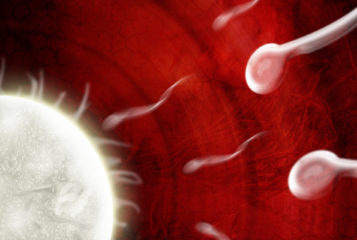The Telegraph has reported the story of Emma Cresswell, a donor-conceived woman who successfully applied to have a new birth certificate issued to reflect her view that she is fatherless. Cresswell 'fought a six-year battle to have the man she thought was her father removed from her birth certificate' and now reportedly hopes that others will follow her example.
She reportedly discovered she was donor-conceived during an argument with the man she believed to be her biological father (Mr Faint), from whom she had been estranged for most of her early childhood after he and her mother separated.
This story raises several questions about, for example, the nature of fatherhood, the function of the birth certificate, personal identity, and the importance of telling donor-conceived children about their origins. In this brief article I will quickly unpick some of Cresswell's and the story's central assumptions.
First, the claim that the new birth certificate now tells the 'truth' about Miss Cresswell's father (i.e. that she is fatherless) seems quite bizarre. On most accounts of fatherhood Cresswell does have a father - only who her father is will depend on what account of fatherhood we use.
If 'father' means 'genetic progenitor', then the sperm donor is Cresswell's father. If 'father' means the man who accepted that role, then her father at the time of her birth was Faint, which is what the birth certificate recorded. If 'father' means the man who actually played a role in raising her then, again, Faint would fit the bill - although arguably he may not have been a good father in this regard, having reportedly been absent for a large proportion of her early life.
If we are to take Cresswell's claim that she does not have a father seriously, then we must accept that the following conditions are necessary for a man to be considered a father: he must have (a) provided the genetic material, (b) accepted paternal responsibility and (c) raised the child. On this account, all donor-conceived children, all adopted children and any child whose father dies in its early infancy is, and always will be, fatherless. This seems like an awful lot to swallow. It seems plausible that any one of those criteria might alone be sufficient to make a man a father.
Second, Cresswell suggests that every child should be issued with a two-page birth certificate - one to record the people who are legally responsible for the child and the other to record whether they were conceived 'naturally'. The latter would be to tell all donor-conceived children that they were donor conceived, so that they could then search for their 'donor father' when they turn 18.
The question of donor-conceived children having a right to know is too big to deal with here (see this article for some of my views) but what is interesting is that even if such a two-page certificate were issued for Cresswell, Faint would still have been registered as her father. The two-page birth certificate would have ensured she found about her donor-conceived status as a matter of course, but it would not have recorded the 'truth' about her father as she sees it.
If the 'truth' is that she has no father, then what she ought to be suggesting is that donor-conceived children are registered as fatherless (having no legal father), because neither the donor, nor the man presenting for treatment with the mother, would fulfil the three criteria she appears to think necessary for fatherhood.
This was undoubtedly a very personal decision for Emma Cresswell, and I have no intention of criticising her for it. She found out about the circumstances of her conception in a less than optimal way, and she has taken action that allows her to reconcile what she felt to be a threat to her sense of self.
But that is exactly the point. It is a personal decision, and her actions are more a statement about her relationship with Faint, and to finding out the way she did, than a statement about how we should deal with donor conception and fatherhood in general.
Hard cases make bad law, as the saying goes, and the fact that Cresswell felt it necessary to respond in this way gives us no reason to think that others ought to respond similarly (as she appears to suggest), nor that policy ought to change.
It may well be that Cresswell is now fatherless - she no longer has a man in her life who plays the role of a father. That is, however, a product of her relationship with that man, rather than her donor-conceived status.
Whether or not her relationship with Faint was in some way affected from the start by the fact that they were not genetically related is a moot point - but even genetically related children and parents can become estranged, for a variety of reasons.
My view is that this is a sad and powerful story about a daughter and a father becoming estranged — a family break-up. It is not an edifying lesson on donor conception. There are some good arguments for children being told the circumstances of their conception — but this story does not provide one, and the message it gives about what fatherhood is, and ought to be, is at best bizarre.






Leave a Reply
You must be logged in to post a comment.